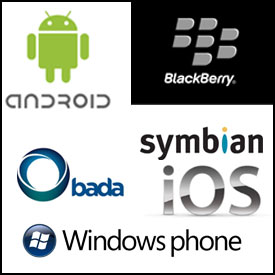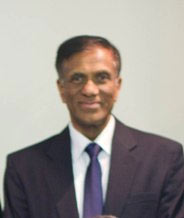 |
| |
| Technologies That Change the Way We Live - By Eng. Sarath Weerasinghe |
| |
| When the first IBM PC came in to the Personal Computer market 32 years ago it looked like a powerful machine one could own and that could be used at home. It only had a 640K Bytes of RAM (Random Access Memory) and 256K Bytes of ROM (Read Only Memory), and was running at 4.7 MHz clock speed. It had floppy disk drives and a monochrome display unit, with the XT model introducing 10 M Byte hard disk. Since then, the personal computers and similar devices have evolved immensely. The recent introduction of the smart phones into the market has put a technological marvel in everyone’s pocket. The amount of technology that is embedded in these phones is amazing. To start with they are wireless mobile telephones. They have to communicate with operating mobile networks to connect to telephone networks and data networks including Internet. For that purpose, phones need built in, radio transmitters, radio receivers and antennas. The engineers, who developed them, have faced tremendous challenges to house and to conceal them in these little devices. |
|
| The Mobile Technologies |
| |
The mobile technologies that are used for communication have themselves gone through an evolution of its own via second generation (2G) to fourth generation (4G) as they are being used today. Each of these technologies is a subject of its own and a large amount of engineering effort has gone in to the development of these standards. All these technologies are capable of supporting audio, video and data communication. In the best performance conditions, down load speeds of 100 MBits/sec can be achieved using current 4G technologies. In addition to these mobile technologies, IEEE 802.11(a/b/g/n/ac) standards-based, short range wireless technology which is commonly known as Wi-Fi are also supported by these phones for access to the data networks in the vicinity of Wi-Fi transmitters.
|
 |
|
Wi-Fi hot spots as these transmitting points are commonly known is a very popular communication method used by these smart phones in air-ports, hotels, cafes, offices and many public places for convenient access to internet. Wireless communication capability for these phones does not end there. Bluetooth is almost a standard capability available on these phones for communication with other Blue Tooth capable devices around them. Most of these phones are equipped with Multi-Core CPU’s running at speeds in the range of couple of Giga Hertz to give them high processing power and have up to 64 Giga Byte of memory for storage. They are running special operating systems developed by software engineers specifically for these devices (e.g. Android, iOS). The speaker and microphone are so invisible in these phones and one make wonder whether they are telephones. These are only the basic components of these revolutionary new phones. The additional feature list has not even begun. They are usually equipped with two auto focus camera’s (front and rear) some with over ten Mega Pixel Full High Definition devices made of CMOS (Complementary Metal Oxide Semiconductor) technology. The flash is made of Power Light Emitting Diodes. Apart from using these cameras for video calls they can be used for taking good quality still pictures and video recordings. Digital encoding of audio and video compression formats including ITU-T standards such as H.263 and H.264 provided support in the evolution and many other proprietary formats too helped the progress.
|
|
| Sensors that mobile devices have |
| The list of sensors that these little mobile devices have is impressive. They have inbuilt…. |
| Accelerometer |
to help detect orientation and turn the display when the phone is rotated in a vertical plane. |
| Barometer |
to measure atmospheric pressure and predict weather and tell when the rain is coming, and more... |
| Gesture sensor |
to capture hand gestures to control the phone without touching the screen. |
| Gyroscope |
for detection of movement, which could be very useful in games etc. |
| Hall Effect sensor |
will detect whether the phone cover is closed or open. |
| Hygrometer |
measures humidity of the atmosphere. |
| Thermometer |
to detect the ambient temperature. |
| Magnetometer |
helps to identify magnetic north to help identify the geographical orientation of the phone. |
| Proximity sensor |
detects the closeness of the human body to the phone, typically used to switch off display when the user is on a phone call. |
| RGB light sensor |
detects the intensity of the ambient light so that brightness of the display can be controlled to reduce eye fatigue. |
|
The list is very likely to be extended further into areas of health surveillance in the future. When that happens, the older population will start loving these smart phones which will bring doctors closer to them to maintain their health and probably to extend their lives. These enhanced devices will be able to remotely report the health conditions of the patients to the doctors who could even be located in a faraway country.
|
|
| Voice Recognition Technology |
|
These phones are smart enough to interpret simple voice commands and act accordingly. Voice recognition technology has been developed to a state that they are usable in such portable devices. It has become a member of the powerful personal computer and tablet family. The phone can be connected to computers via USB (Universal Serial Bus) or a similar port for transfer of data, like any other data storage device such as a portable hard disk. The storage capacity of them can be extended by insertion of external memory cards in to the External Memory Slots. The use of well designed and engineered high tech standards have enabled the tech savvy population a universal experience with these phones. Current portable electronic devices depend on rechargeable batteries that are light and small. They retain the charge and lasts for long hours for operation of the device. It is evident from the weight and the size of them that the advance of the storage battery technology has been up to the expectation of the development of the mobile phones.
|
| Apps |
|
The applications that run on these phones (fondly known as ‘apps’) created by software engineers are changing the way we do things and may have some social implications. The technology behind the successful story of the ‘smart phone’ is enormous. The invention of the transistor is probably the first chapter of this story book. In an article like this, one can only scratch the surface of the huge mass of engineering and technology that enabled this wonderful device called ‘smart phone’ to be created. If the phone is really ‘smart’, it might one day realize what Sir Isaac Newton once said “If I have seen further than others, it is by standing upon the shoulders of giants”. Page Top
|
|
| Eng. Sarath Weerasinghe |
| |
 |
| |
|
Eng. Sarath Weerasinghe received his B.Sc(Eng.) in Electrical and Electronic Engineering from the University of Ceylon, Peradeniya in 1975, and Master of Electronic Engineering from NUFFIC, Netherlands in 1982.
He has over 35 years of experience in Telecommunication and Electricity industries in Sri Lanka, Saudi Arabia, Brunei, Taiwan, Solomon Islands, Fiji and Australia. He held numerous positions in planning, design, deployment, operation and maintenance of Telecommunication Networks, and, customer support and technical market support of telecommunication equipment. His telecommunication engineering career spanned across Saudi-Telecom, Alcatel, AT&T, Lucent Technologies, Nortel Networks, Alcatel-Lucent and Huawei Technologies.
He is currently an Engineering Project Manager of the Networks Division of Singtel-OPTUS Communications in Sydney, NSW, Australia. He is also a member of Engineers Australia, IET (UK), IEEE(USA) and PMI(USA).
weeras@optusnet.com.au
|
| |
|